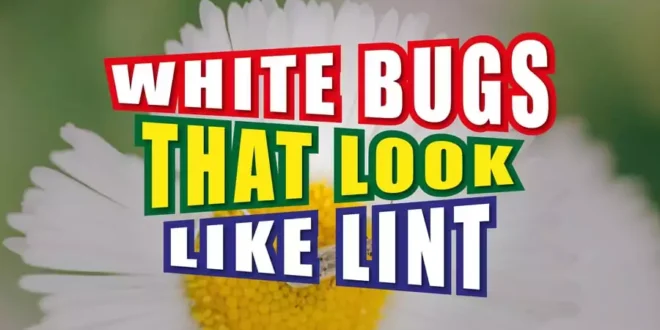Have you ever noticed small, white bugs that look like lint in your home? These pests are a common household problem, but many people are not sure what they are or how to get rid of them.
Some bugs evolved to look like lint to help them blend in better with the environment. It helps them avoid their natural predators.
Insects in hotter areas evolved to have a white coating as it helps them reflect heat and thermal radiation better. Today, we shall look at the various insects that resemble lint.
24 White Bugs That Look Like Lint
1. Mold Mites

Scientific Name: Tyrophagus putrescentiae
Lifespan: 9 to 30 Days
Mold mites are small arthropods often found in damp or humid environments. They typically feed on mold and fungi. They thrive in areas with a moisture buildup, such as bathrooms, basements, or attics.
Mold mites are not harmful to humans and do not bite or sting. They can be a nuisance because of their presence in large numbers.
2. Cotton Cushion Scales
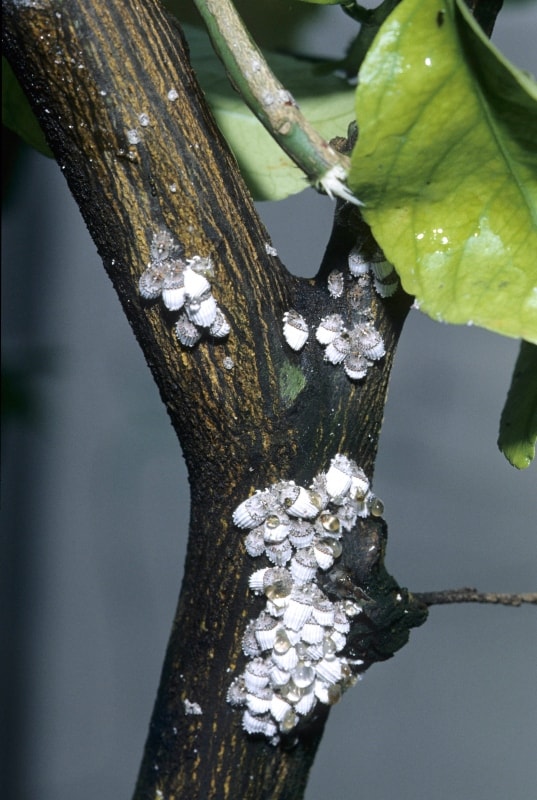
Scientific Name: Icerya purchase
Life Span: 121 to 182 days
These insects are pests because they feed on the sap of a variety of plants. They typically like citrus trees. Cottony cushion scale insects are named for the white, cottony egg sacs that females produce.
The adult scale insects are small, about 1/8 to 1/4 inch in length, and are brown or reddish.
3. True Cochineal Bugs

Scientific Name: Dactylopius coccus
Life Span: 70 to 90 days
They are known for producing a deep red dye called cochineal. The dye gets formed from the ground-up bodies of the female insects.
Cochineal bugs feed on the sap of various cactus species, including prickly pear cactus. They can cause damage to the plants.
Cochineal bugs are small, about 1/8 inch in length. They get covered in a hard, protective outer shell.
4. Root Aphids
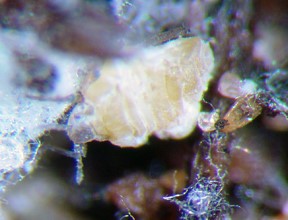
Scientific Name: Pemphigus Betae
Life Span: 10 to 30 days
Root aphids are typically smaller than others and usually feed on plant roots. Root aphids are difficult to identify and control because they hide underground. They often go unnoticed until there is significant damage to the plant.
Signs of a root aphid infestation include yellowing or wilting of the leaves. The plants have reduced growth and stunted or deformed plants.
5. White Maggots
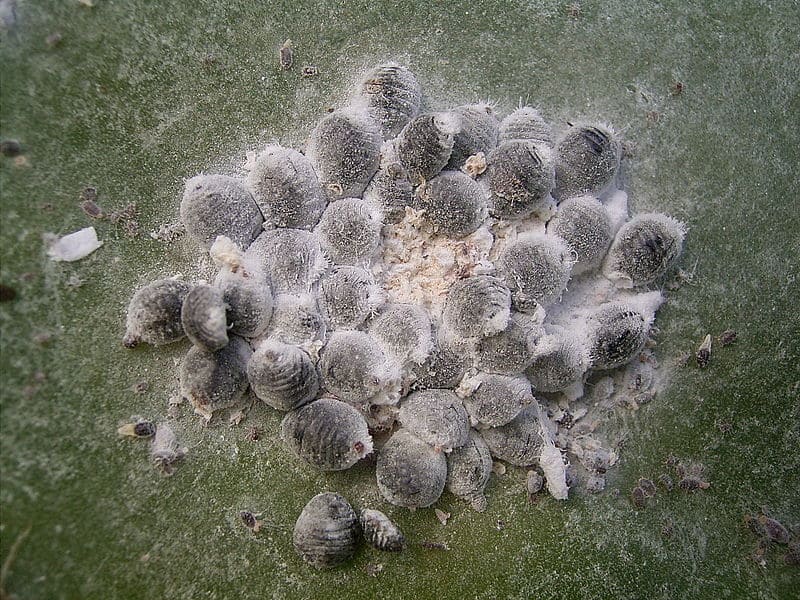
Scientific Name: Lucilia sericata
Life Span: Six days
Larvae are small, legless, worm-like insects typically white or pale. They often thrive in areas where there is decomposing organic matter. It includes areas with garbage, compost, or carrion, where they feed and grow.
Many flies produce larvae and thrive in various environments, including homes, gardens, and farms.
6. Newly Hatched Bed Bugs
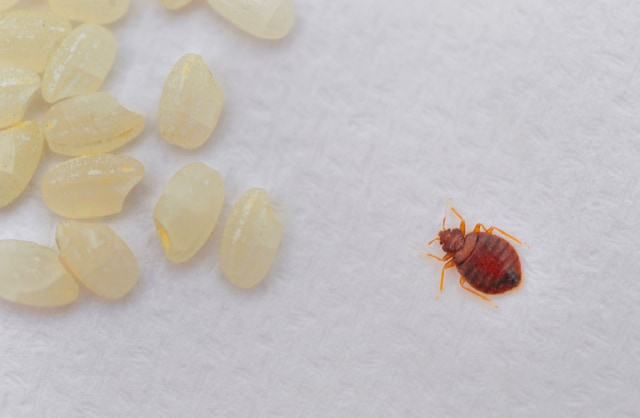
Scientific Name: Hemiptera: Cimicidae
Life Span: 4 to 6 months
Bed bugs are small, parasitic insects that feed on the blood of humans and animals. They live in or near beds, where they can easily access their hosts while they sleep.
Bed bugs are difficult to control because they are small and elusive. They can hide in various places. You can find them in furniture, bedding, and behind walls or floor coverings. Bedbugs cause severe itching and skin irritation.
7. Cat Flea Larvae
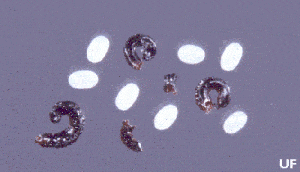
Scientific Name: Ctenocephalides felis
Life Span: 4 to 25 days
Cat flea larvae are the immature form of the cat flea. They are small, wingless insects that feed on the blood of animals. These animals include cats, dogs, and humans.
Flea larvae feed on organic matter, such as the feces of adult fleas. Properly treating pets with flea control products can help prevent flea infestations.
8. Woolly Aphids

Scientific Name: Eriosomatinae
Life Span: 4 to 10 days
Woolly aphids are small insects that feed on the sap of plants. They produce a waxy, white substance that covers their bodies and forms a protective covering.
This substance gives them a “woolly” appearance and helps them retain moisture.
Regularly inspecting plants for signs of infestation and removing and destroying any visible insects or egg masses are important.
9.White Flies

Scientific Name: Trialeurodes vaporariorum
Life Span: 30 to 40 days
Trialeurodes vaporariorum, commonly known as the greenhouse whitefly, is a small, winged insect. They feed on the sap of plants.
Greenhouse whiteflies are small, about 1/16 to 1/8 inch in length. These flies are typically white or yellowish. They have a pair of wings and can fly. They often live in areas near the plants they feed on.
10. Mealy Bugs

Scientific Name: Pseudococcidae
Life Span: 5 to 10 days
Mealybugs are small, sap-sucking insects that live on a variety of plants. It includes indoor plants, outdoor ornamentals, and crops.
Mealybugs are small, about 1/8 to 1/4 inch in length. They live in clusters on plants stems, leaves, or roots.
It is important to inspect plants for signs of infestation regularly. It can help control mealybug infestations. Mealybugs are not harmful to humans.
11. Soil Mites
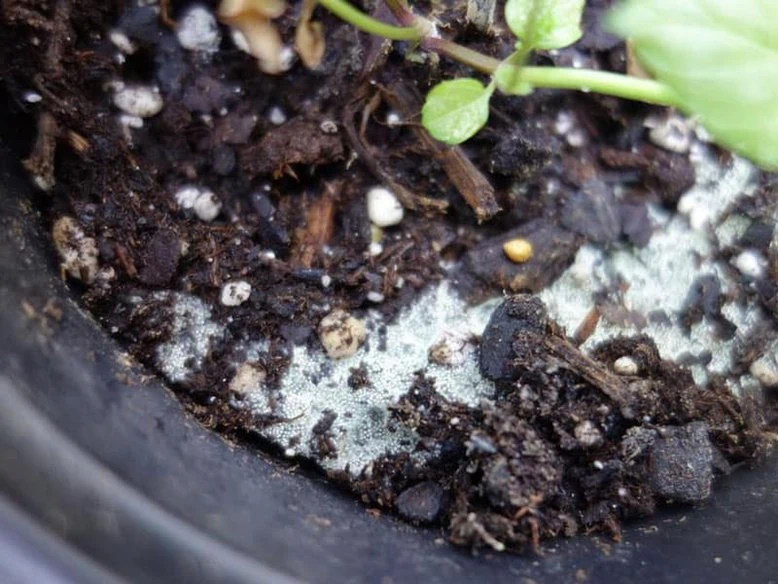
Scientific Name: Acari
Life Span: one to two years
Soil mites are small arthropod animals that live in the soil and feed on organic matter. They thrive in areas with a high concentration of organic matter. They are also common in compost piles.
Soil mites are not harmful to humans and do not bite or sting. They can benefit plants because they help break down organic matter and improve soil structure.
12. Termite Larvae
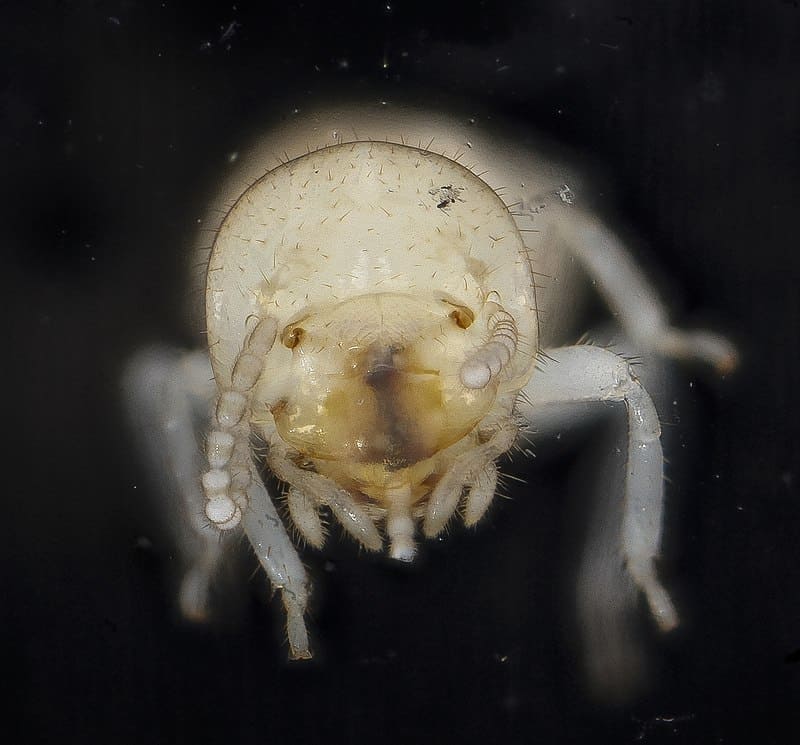
Scientific Name: Isoptera
Life Span: One to Two years
Termite larvae are the immature form of termites. These are a group of insects known for their wood-feeding behavior.
Termites are social insects living in colonies and get divided into castes. These include workers, soldiers, and reproductive insects.
Termite larvae are important to the colony. They provide food and labor as they grow and develop.
13. Plaster Bug worms
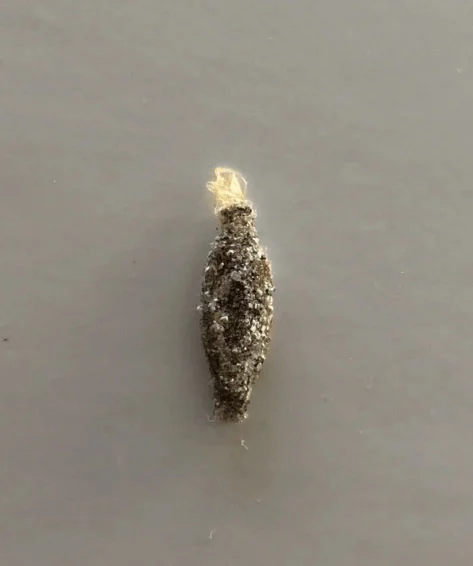
Scientific Name: Phereoeca uterella
Life Span: 2.5 Months
Plaster bugs are insects that feed on the plaster in buildings, causing damage and leaving behind small, powdery holes. Plaster bugs are small, about 1/8 inch in length, and typically white or reddish.
Plaster bugs can be a nuisance because of the damage they cause. They weaken buildings and leave feces everywhere.
14. Beech Scale Bugs

Scientific Name: Fagus sylvatica
Life Span: 1 year
Beech scale insects are small, sap-sucking pests that feed on the beech trees’ leaves. You may find them in branches and trunks. They typically live on European beech trees, but they can also infest American beech trees.
If unchecked, a heavy infestation of beech-scale insects can weaken the tree. It makes trees more susceptible to other pests and diseases. The beech scale bugs are not harmful to humans.
15. White Springtails

Scientific Name: phylum Arthropoda
Life Span: Four to six weeks
Springtails are small, wingless insects that belong to the order Collembola. They are known for their ability to jump using a specialized structure called a furcula.
Springtails are beneficial insects because they help to break down and recycle organic matter. They are beneficial to the environment.
If you are experiencing an excess of springtails in your yard or garden, try removing any excess moisture.
16. Booklice

Scientific Name: Psocoptera
Life Span: Six Months
Booklice, also known as psocids, are small, wingless insects that belong to the order Psocoptera. They are usually less than 1/16 inch (1.5 mm) long and are pale or light brown.
They are often found in damp or humid environments and are attracted to stored food and paper products.
If you are experiencing an infestation of booklice, try reducing the humidity in the affected area. Booklice can damage books, and it is important to manage them.
17. Dust Mites
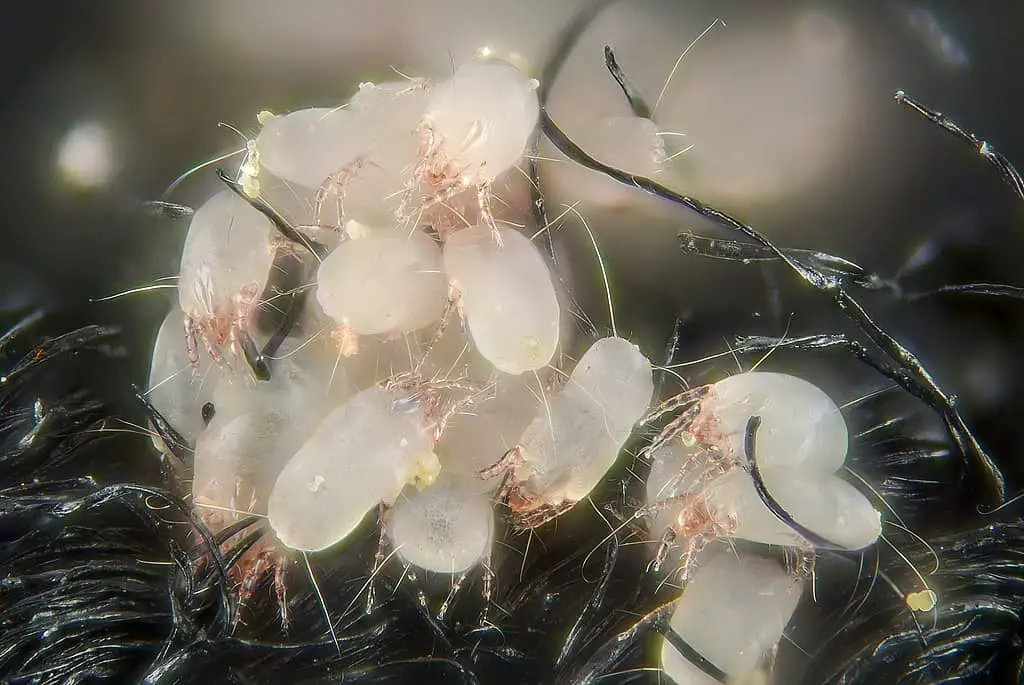
Scientific Name: Dermatophagoides
Life Span: One to three months
Dust mites are small, eight-legged arthropods that belong to the subclass Acari. They are a type of mite that thrives in almost every home. Dust mites are a common cause of allergy symptoms.
Dust mite allergies can also cause asthma symptoms, such as wheezing and difficulty breathing. It is important to keep your home clean and well-ventilated. It reduces the risk of dust mite allergies.
Spray exposed wood with bug spray to keep dust mites away.
18. White Spider Mites

Scientific Name: Tetranychus urticae
Life Span: Two to four weeks
White spider mites are small, sap-sucking pests that feed on many plants’ leaves, stems, and fruit. They are a type of spider mite that is white or pale. They live on the undersides of leaves.
Symptoms of a white spider mite infestation include yellowing or stippling the leaves. They cause wilting and leaf loss. White spider ants are not harmful to humans.
19. Body Lice

Scientific Name: Pediculus humanus humanus
Life Span: 30 days
Body lice are small, parasitic insects that infest the human body and feed on blood. They are a type of louse that lives on the human body.
Body lice infestations are more common in crowded or unsanitary conditions. Treatment with a medicated shampoo or lotion is usually effective in eliminating body lice infestations. General hygiene and cleanliness help keep lice away.
Body lice can cause itching, irritation, and inflammation of the skin.
20. White Aphids

Scientific Name: Aphidoidea
Life Span: 30 days
They are a type of aphid that is white or pale and live on the undersides of leaves. They feed on plant sap. White aphids are common in vegetables and fruit trees.
It is important to monitor the plant for signs of infestation carefully. You can use a combination of physical, cultural, and chemical control measures. Managing the numbers is helpful.
21. Rodent Mites
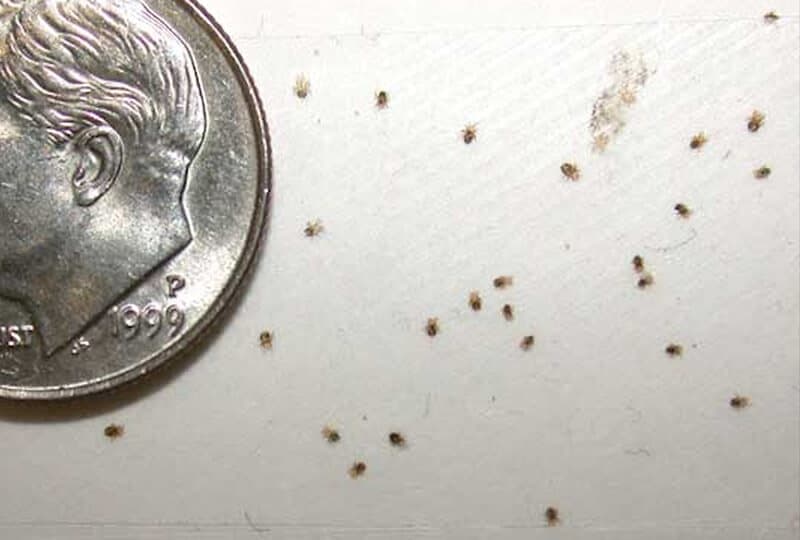
Scientific Name: Ornithonyssus bacoti
Life Span: Six weeks
Rodent mites are small, eight-legged parasites that feed on rodents’ blood, such as rats and mice. They are a type of mite found on rodents’ bodies and in their nests and burrows.
Rodent mites can cause irritation, itching, and skin inflammation and transmit diseases to humans. It is important to seek professional pest control services for proper diagnosis and treatment.
22. Spring Tails
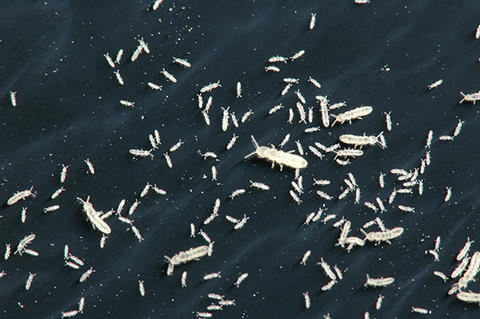
Scientific Name: Collembola
Life Span: Three to five weeks
Springtails are small, wingless insects that belong to the order Collembola. Springtails are usually small, ranging from 1 to 4 millimeters in length. They have pale or light-colored.
They have elongated, segmented bodies and get covered in a powdery substance. The powder helps to protect them from desiccation.
They are beneficial insects because they help to break down and recycle organic matter in the environment.
23. Pot Worms

Scientific Name: Phylum Annelida
Life Span: Four to six weeks
Pot worms are also known as enchytraeids or enchytraeids worms. They are small, segmented worms that belong to the phylum Annelida.
They are typically less than 1/2 inch (1.3 cm) long and are pale or white. Pot worms are common in gardens and landscapes.
Pot worms are beneficial because they help to improve soil structure and fertility. They are also important to the ecosystem as they are a food source to many birds.
24. Thrips

Scientific Name: Thysanoptera
Life Span: 60 days
Thrips are small, slender insects that belong to the order Thysanoptera. They are typically less than 1/8 inch (3 mm) long and are yellow, brown, or black.
Thrips have slender bodies and fringed wings. They are known for their distinctive, fast-moving behavior.
Pruning helps infested branches by removing and destroying infested leaves. It can help reduce the population of thrips.
Conclusion
By now you should be able to identify white bugs that look like lint. Many insects have a lint-like appearance. Most of them have biological adaptations that justify their color.
The function of white coloration in insects can vary depending on the species and the environment in which they live.
Distinguishing these insects can often be challenging. The article looks at the most common insects that look like lint.
 Being Human
Being Human
